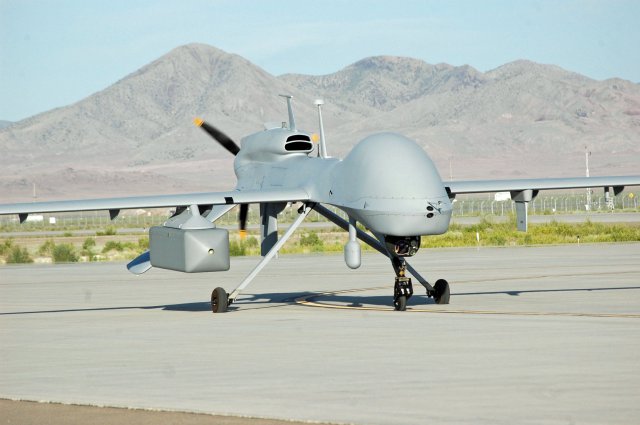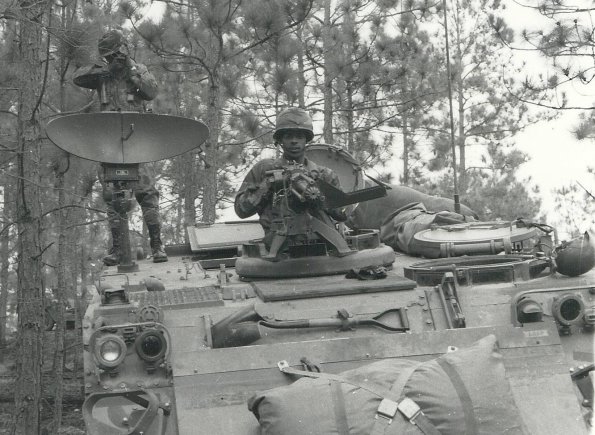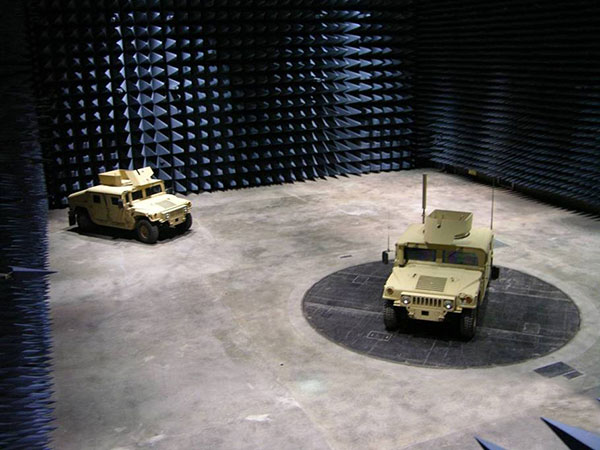Army’s New Rapid Capabilities Office Studies Electronic Warfare Boost
Posted on

The Army’s NERO program tested a converted Navy jammer on a Grey Eagle drone, the Army version of the Predator.
PENTAGON: The brand new Army Rapid Capabilities Office is studying proposals to spend between $50 and $100 million on urgently needed electronic warfare gear, Breaking Defense has learned. The options include sensors to detect radar and radio signals, and jammers to block them, mounted on ground vehicles, soldiers’ backpacks, and drones.
Where will the money come from? It will probably have to be stripped from other Army budget lines, Col. Jeffrey Church, the senior officer in the Army’s small EW corps. cautioned yesterday during an interview in his Pentagon office.

Gen. Mark Milley, Army Chief of Staff, talks to Army Secretary Eric Fanning.
Newly confirmed Army Secretary Eric Fanning has pledged to create a high-speed bypass around the Army’s notoriously troubled acquisition system. His choice is modeled on the Rapid Capabilities Office (RCO) in the Air Force, where Fanning served as acting secretary. The Navy Department and the Office of Secretary of Defense have both created similar offices.
A former enlisted man who rose to two-star general, Maj. Gen. Walter Piatt, was named in April to head the Army RCO. However, Piatt’s not yet moved over from his old job on the Army headquarters staff, and ARCO’s funding and authorities are still being settled. This is the first we’ve heard that ARCO — or at least a proto-ARCO staff — is at work. (We’re waiting on more details from the Army on ARCO’s status).

The Army disbanded its Combat Electronic Warfare Intelligence (CEWI) units, like the one shown here, after the Cold War.
Why EW?
Why start on this particular project? Fanning has highlighted electronic warfare and cyber as top priorities. Russia and China are investing heavily in both areas and Russia has demonstrated devastating EW capabilities in Ukraine. Of course, the American military’s dependence on wireless networks makes it heavily vulnerable to both. Electronic warfare can jam the signals carrying data, cyber warfare can corrupt the data itself. A particularly sophisticated EW attack might in fact transmit a computer virus into an enemy system otherwise sealed off from cyber attack. The two ways of warfare are intimately intertwined.
Cyber is far sexier, however, and has gotten far more funding and attention. Electronic Warfare lags well behind, especially in the Army, which disbanded its EW units in the 1990s. The service invested heavily and hurriedly in specialized jammers to defeat radio-controlled roadside bombs in Afghanistan and Iraq. But on current budget plans, the more powerful, flexible equipment required to counter a sophisticated adversary — e.g. Russia — won’t enter service until 2023.

Col. Jeffrey Church
“There’s things that the Army could go acquire right now,” Church told me yesterday. His team briefed ARCO on systems currently in service with the Marines and foreign allies, as well as ones available off-the-shelf from industry or the government itself. All told, ARCO was presented with nine options: three backpack-portable systems, three for ground vehicles, and three for unmanned air vehicles.
All the options can sense incoming radio-frequency signals — what’s called “electronic support” — and transmit their own signals to deceive or disrupt the enemy — spoofing and jamming, aka “electronic attack.” But the ideal is a mix of different systems complementing each other.
A backpack-portable system, for example, can go anywhere a soldier can walk, climb, or crawl, but its power supply is limited to the batteries the squad can carry. A truck-mounted system has much more power, but it can’t go as many places. A drone-mounted system can fly quickly anywhere on the battlefield and go over obstacles that block ground-based transmissions, but it’s the most expensive, about $1 million apiece according to some preliminary Army estimates.
Church is particularly concerned that the near-term fixes he’s proposed to ARCO should not funded by raiding the long-term solution, the Multi-Function Electronic Warfare program currently scheduled to enter service 2023.
“I’m making these recommendations… of these things that are ready right now, but I don’t want to disrupt the long-term, integrated electronic warfare systems, specifically Multi-Function EW,” Church said. The Army is taking advantage of a clean slate to introduce cutting-edge systems and leapfrog over adversaries like Russia, he said: “Their stuff’s old. Our stuff’s going to be newer and better.”

Inside an Army electronic warfare testing facility at White Sands.
Beyond ARCO
The Army has already increased investment in electronic warfare, albeit from a low base: Research, Development, Testing & Engineering (RDTE) rose to $118 million in 2017, plus more than $50 million to accelerate procurement. Now EW is competing for funds in the 2018 budget process.
Meanwhile, the software that EW soldiers will use to organize data and control their equipment, the Electronic Warfare Planning and Management Tool (EWPMT), is already running in demo mode and is on track to enter service in September.
The Army is also investing almost $2.5 million in equipment to replicate enemy jamming. That way troops can train in realistically tough scenarios where they can’t always rely on their radios, radars, wireless networks, and GPS devices. The Chief of Staff, Gen. Mark Milley, made such training a priority in December. Less than eight months later, as of July, the National Training Center on Fort Irwin, California will turn on a $2 million arsenal of jammers.
NTC will use real jamming equipment, but most bases can’t transmit disruptive signals without upsetting their civilian neighbors. So for “home station” training, the Office of the Secretary of Defense gave the Army $495,000 for a pilot project with so-called “Direct Injection Jammers.” These simulators are directly attached to the training unit’s equipment and can shut it down or disrupt its functioning if they receive the right trigger signal. Any civilian system — or military system not involved in the exercise — that picks up the trigger signal is unaffected, since it doesn’t have a DIJ attached. (The approach is similar to laser tag or the military’s MILES training gear). The first demonstration will occur in February with the Colorado National Guard.
Subscribe to our newsletter
Promotions, new products and sales. Directly to your inbox.
